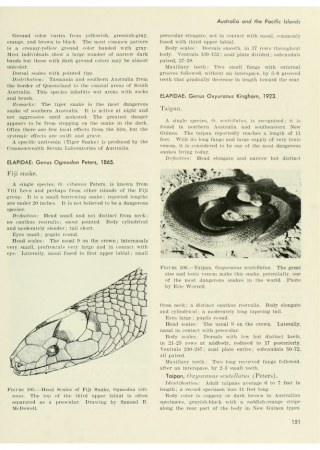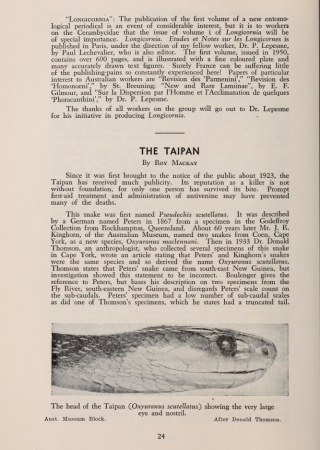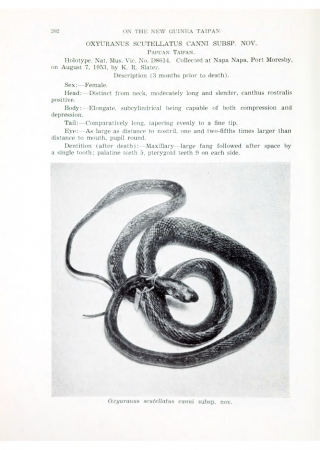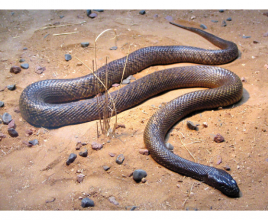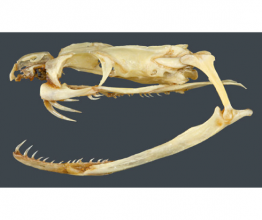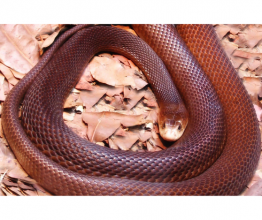Taipan
Oxyuranus
Did you know that… ?
- ...there are three species of taipan: coastal taipan (Oxyuranus scutellatus), inland taipan (Oxyuranus microlepitodus) and Central Ranges taipan (Oxyuranus temporalis)?
- ...a taipan carries enough poison in its venom sacs to kill around one hundred people?
- ...taipans inhabit burrows of small mammals that they have consumed?
- ...K. C. Budden, who captured a taipan in order to produce an anti-venom died a day after being bitten by one?
- ...the first non-Australian zoo to keep a live taipan was the New York zoo?
- ...taipans in captivity are very aggressive and often attack each other?
- ...taipans, like cobras and mambas, belong to the Elapidae family?
Practical info
Basic information:
Phylum - Chordata
Class - Reptilia
Maximum length - 3 m
Eats - small mammals
Habitat - Australia
Type of poison - neurotoxin
Distinguishing marks:
A relatively long snake with a thin body. Its color is brown on top, with a creamy yellow underbelly, occasionally with orange spots, or may even be gray-black on top, with a lengthwise red stripe.
Characteristics and poison
The taipan is a deadly poisonous Australian snake, reaching a length of up to three meters. It is found along the northern shore, eastern shore and interior of eastern Australia. It feeds primarily on small mammals, like rats and small marsupials. The taipan's poison causes coagulation and consequent blockage of the circulatory system, and is also a potent neurotoxin. Death comes from paralysis of the breathing mechanism, so the victim suffocates while fully conscious. Cases are known where death occurred within minutes. However, taipan bites are rare, because the wild snake is very timid.

